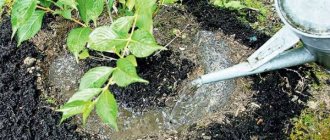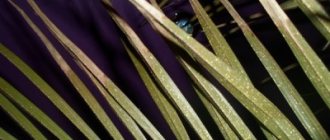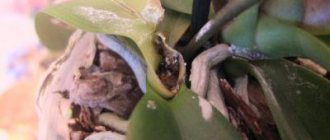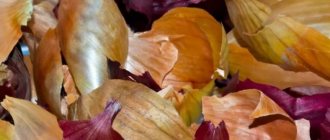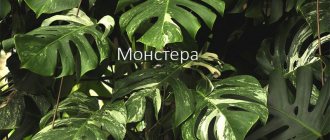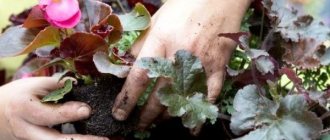Where do plants get their nutrients naturally?
| Blooming orchid |
Under natural conditions, each plant participates in the cycle of substances in nature.
Earthworms, fungi, bacteria and soil-dwelling insects break down dead organisms into their constituent elements. This produces important minerals necessary for plant nutrition. They are absorbed by the plant through the roots and are used as building material for new cells. When a plant dies, it is processed by soil-dwelling insects and microorganisms; the mineral compounds that made up its tissues are decomposed into their constituent elements and become available to other living organisms.
Indoor plants are excluded from this cycle of substances, and therefore they have to be content only with those mineral substances that we provide them.
Since the volume of soil in the pot is not particularly large, quite often plants suffer from a lack or excess of nutrients.
Essential Nutrients
Typically, nutrients are divided into micro- and macroelements depending on the needs of the plant.
Most of all, the plant needs macroelements: nitrogen, phosphorus and potassium, as well as sulfur, magnesium and calcium. Microelements include boron, iron, copper, manganese, molybdenum and zinc. Each element of mineral nutrition performs at least one, and sometimes several important functions in a plant. Microelements are needed by the plant in small quantities, but their deficiency negatively affects its viability.
Below is a list of the main nutrients and the functions they perform in the plant body.
Nitrogen (N)
It is considered the most important for the plant because it is the main component of plant protein compounds. Nitrogen is necessary for the growth of leaves and shoots, as well as for the formation of green leaf cells (chlorophyll).
Phosphorus (P)
Phosphorus affects the growth of roots, buds and buds. In addition, it is necessary for the ripening and coloring of flowers, fruits and seeds.
Potassium (K)
This element is necessary primarily to maintain the water balance of the plant, because potassium helps retain water in the cells. In addition, potassium increases plant resistance to pests and the ability to tolerate unfavorable conditions.
Sulfur (S)
Just like nitrogen, it is a building material for the formation of protein plant compounds and chlorophyll.
The latter also applies to another element - Magnesium (Mg).
Calcium (Ca)
increases the strength of plant tissues and, like potassium, helps increase plant endurance.
Causes of chlorosis
It is impossible to say for sure why plants develop chlorosis. There are many reasons, and their nature is different. This can be an infection caused by microorganisms, viruses or fungal spores, carried by insect pests. This may also be due to improper care of the plant: poor drainage, damage to the roots, incorrect soil composition. There is even hereditary chlorosis, thanks to which new variegated plant varieties appear. But the most important and common cause of chlorosis is a lack of iron, magnesium, lime, zinc, sulfur and other minerals. It is the lack of microelements that is most often implied when it comes to chlorosis. In general, chlorosis is divided into infectious (viral) and non-infectious.
Signals indicating a lack or excess of minerals
| Citrus leaf chlorosis; its cause may be, for example, the use of hard water for irrigation. |
Usually the plant receives a sufficient amount of nutrients if we do not forget to regularly feed it during the growth period, and perennial plants are transplanted into new soil from time to time.
However, sometimes gardeners notice growth or color disturbances in their pets and cannot find the reason for this. Although they cannot detect any pests, they may use some special protective agent just in case.
| This chrysanthemum suffers from a lack of magnesium. |
However, all this does not eliminate the real reason, which lies in the malnutrition of the plant.
The following symptoms can be observed especially often in indoor plants, indicating a lack or excess of minerals. About nitrogen deficiency
can be recognized by their slower growth: ornamental leaf plants produce very few new shoots. The leaves turn pale, become light green in color, and reddish shades are also possible. This primarily manifests itself in older leaves, which fall prematurely at the next stage.
| This is what the leaves of a plant suffering from a lack of minerals look like. From left to right: with a lack of nitrogen, phosphorus and potassium. |
Excess nitrogen
is manifested in the dark green color of the leaves and the porous soft tissue of the plant.
Resistance to diseases and pests is reduced. If flowers do not form or are pale in color, it means there is a lack of phosphorus
. In this case, often the lower, older leaves become dirty green, in addition, other colors may also be present in their color, from blue to red and purple. Young leaves remain small and their tips curl upward.
A plant suffering from potassium deficiency
, becomes lethargic, especially on warm and sunny days. It remains small and squat, often the leaves turn pale at the edges and fall off. With a lack of potassium, the plant’s resistance to various diseases and pests decreases.
A typical sign indicating iron deficiency
, is the so-called chlorosis of the leaves: their veins become dark green, and the surface of the leaf between them turns pale and acquires a yellowish tint. Plants especially often suffer from iron deficiency when daylight hours decrease or when the soil acidity level decreases.
Excess of microelements
Too much mineral content in the soil is just as harmful to the plant as its deficiency. Typically, this situation occurs in the case of overfeeding with fertilizers and oversaturation of the soil. Failure to comply with the dosage of fertilizers, violation of the timing and frequency of fertilizing - all this leads to excessive mineral content.
Iron. Excess iron is very rare and usually causes difficulty in absorbing phosphorus and manganese. Therefore, the symptoms of an excess of iron are similar to the symptoms of a deficiency of phosphorus and manganese: a dark, bluish tint of the leaves, cessation of plant growth and development, and the death of young shoots.
Magnesium. If there is too much magnesium in the soil, calcium ceases to be absorbed; therefore, the symptoms of an excess of magnesium are generally similar to the symptoms of calcium deficiency. This is the curling and dying of leaves, a curved and torn shape of the leaf plate, and a delay in the development of the plant.
Copper. If there is an excess of copper, brownish spots appear on the lower, older leaves; subsequently, these areas of the leaf, and then the entire leaf, die. Plant growth slows down significantly.
Zinc. When there is too much zinc in the soil, the plant leaf becomes covered with whitish watery spots on the underside. The leaf surface becomes bumpy, and subsequently the affected leaves fall off.
Bor. Excessive boron content appears primarily on the lower, older leaves in the form of small brownish spots. Over time, the spots increase in size. The affected areas, and then the entire leaf, die.
Molybdenum. If there is an excess of molybdenum in the soil, the plant does not absorb copper well, so the symptoms are similar to those of copper deficiency: general lethargy of the plant, slow development of the growing point, light spots on the leaves.
Manganese. Excess manganese in its symptoms resembles magnesium starvation of a plant: chlorosis on older leaves, spots of different colors on the leaf blade.
Nitrogen. Too much nitrogen leads to rapid growth of green mass to the detriment of flowering and fruiting. In addition, an overdose of nitrogen in combination with excessive watering significantly acidifies the soil, which in turn provokes the formation of root rot.
Phosphorus. Excessive amounts of phosphorus interfere with the absorption of nitrogen, iron and zinc, resulting in symptoms characteristic of a deficiency of these elements.
Potassium. If the soil contains too much potassium, the plant stops absorbing magnesium. The development of the plant slows down, the leaves acquire a pale green color, and a burn occurs along the contour of the leaf.
Calcium. An excess of calcium manifests itself in the form of interveinal chlorosis. This happens because too much calcium leads to difficulty absorbing iron and manganese.
Soil acidity level
In connection with feeding plants, it is also worth saying a few words about the level of soil acidity. The acidity level refers to the ratio of acids and alkalis. For greater clarity, let's introduce a scale from 1 to 14. At an acidity level of 7, the soil is considered neutral. If the pH is less than 7, then the soil is acidic, if more, then it is alkaline.
The acidity level of the soil determines the ability of plants to absorb nutrients. They are best absorbed if the soil is slightly acidic or neutral (pH from 5.5 to 7). If the pH value deviates in one direction or another, then the plant may show signs of lack of nutrients, although the soil will contain them in the required quantity.
When buying a plant, we can assume that the soil is neutral or slightly acidic. However, over time, unwanted deviations may occur.
The more lime contained in the irrigation water, the faster the soil acidity level decreases (the pH value increases). The plant's leaves begin to turn yellow (nitrogen deficiency) or leaf chlorosis develops (iron deficiency).
These signs appear especially often in plants that prefer acidic soil. These include camellia (Camellia japonica), cattleya (Cattleya labiata) and azalea (Rhododendron simsii). These plants feel best if the pH is 4 - 5. When growing them, you can use special ammonium-containing mineral supplements that increase the acidity of the soil or maintain it at the desired level. We mean oxidizing additives.
In addition, we also recall that water for irrigation must be soft in order to prevent the accumulation of alkalis in the soil.
If you suspect that your plants are not growing properly due to an incorrect level of soil acidity, check the pH value using a special pH tester, which can be purchased at a flower or garden store.
| Various types of mineral fertilizers: 1. Nutrient sticks; 2. Delayed release fertilizers; 3. Mineral supplements in granules; 4. Horn shavings; 5. Blood meal; 6. Horn flour. |
The need of indoor plants for minerals
Plant nutrient requirements depend on a number of factors. It is especially high during the growth period, that is, from March to September.
Most plants need to be fed at least once a week during this period. The situation is different in winter, when each plant has its own feeding regime. Plants overwintering in a shaded or cool room are fed once every three to four weeks. Plants that enter a dormant period in winter generally stop feeding. The need for various minerals varies greatly depending on the phase of plant development.
A young plant requires fertilizers with a high nitrogen content, which promotes the growth of stems and leaves. Later, during the flowering period, phosphorus-containing mineral supplements should be added.
Potassium is always needed in sufficiently large quantities by the plant, regardless of the phase of development.
Summer (July-August)
Yellowing of leaves on an apple tree in summer is often associated with physiological disorders of the tree. For example, planting depth is too deep or the tree trunk freezes in winter .
Often, disturbances in the physiological functioning of plant tissues arise due to the human factor, in particular as a result of cutting a rope or wire into the bark.
It is necessary to remove all unnecessary elements, for example, the label of the seedling and its fastening.
ATTENTION: A typical mistake is untimely loosening of the grafting strap.
The growth of the trunk in width leads to incision . Minor damage is corrected by furrowing, that is, making cuts in the bark down to the wood at the damage, above and below it, to generate the formation of callus influxes.
Another reason why an apple tree turns yellow in summer is the physiological incompatibility of the scion and rootstock as a result of poor fusion of the grafted surfaces.
Proper feeding of plants
During the growth period, fertilizing should begin two to four weeks after purchase.
If you planted the plant yourself, start feeding it only after sprouts appear. At the same time, you have a choice between mineral and organic fertilizers. When using mineral fertilizers, nutrients are immediately available to plants. As for organic fertilizers, the nutrients they contain are absorbed by the plant more slowly. The most common organic fertilizers are compost and manure. However, they are more suitable for a garden or flower bed than for indoor plants. The mineral content of homemade compost cannot be determined, and this can easily lead to damage to sensitive indoor plants due to improper feeding. Other organic fertilizers, such as horn shavings, bone and blood meal, and guano, are best added to the soil when replanting.
In specialized stores you can purchase organic fertilizers, which also contain microorganisms that have a beneficial effect on the composition of the soil and prevent excessive evaporation of water and the formation of crust on the soil surface.
The easiest way to feed indoor plants is to use mineral fertilizers, because... in this case, the plant can receive all the important nutrients in the right proportion.
Liquid mineral fertilizers
This is the most common way to feed plants. In this case, a concentrated nutrient solution is used, containing all the necessary micro- and macroelements. There are special mixtures with a high nitrogen content for ornamental leafy plants. In contrast, mixtures with a high phosphorus content are used for ornamental flowering plants.
The method of using this type of fertilizer is quite simple. Fertilizer concentrations should not be higher than those recommended on the package, even if your plants show symptoms indicating nutrient deficiency. Too high a concentration of fertilizer can damage delicate roots.
Soluble mineral fertilizers in the form of salt
| Feeding with a feeding stick is not difficult. |
They contain all the substances necessary for the plant, including magnesium.
The appropriate amount of fertilizer is dissolved in water. Usually only a small amount of salt is needed, it is best to measure it using a scale. Tablets and sticks
This method of feeding is easier, but less accurate compared to those described above. Depending on the size of the pot and plant, a certain number of nutrient sticks or tablets are introduced into the soil.
The plant absorbs the minerals contained in them gradually, and the danger of oversaturation is reduced.
Special fertilizers
Some plant species, such as cacti, bromeliads or orchids, have their own special feeding requirements. Special nutrient mixtures are available for sale for such plants.
Brief description of special cases
Young apple tree and seedling
Main reasons:
- Wrong landing
- Unsuitable soil composition,
- Waterlogged soil
- Infection with fungal diseases,
- Freezing of roots in winter.
Often, a change in the color of leaf blades from green to yellow is associated with a lack of magnesium , boron, as well as potassium and phosphorus .
A deficiency of these elements causes the ends of the shoots to die.
The relationship between mineral deficiency and yellowing of leaves.
TIP: Sufficient nitrogen concentration is indicated by the presence of nettles as a weed. The presence of dandelion, on the contrary, indicates a shortage.
On one branch
Yellowing of the foliage on one branch may indicate that part of the tree is infested with aphids .
Other causes : damage to roots by mice or moles.
Many of the above options (freezing of roots, deficiency of elements) can lead to yellowing of not the entire tree.
A serious problem that threatens the life of the apple tree is bark diseases, for example, cytosporosis . The lesion first covers one branch, then spreads more strongly and finally to the entire tree.
Leaves turn yellow and dry out
The reason lies in the development of fungal diseases or sucking insects, in particular aphids. It is better to prevent such problems than to solve them as they arise.
Leaves curl and fall
As a result of feeding, aphids suck juices from the leaves, as a result of which the foliage curls and falls off. This coincides with the curvature of young shoots.
Aphids accumulate at the ends of branches, which is where it is necessary to treat them more intensively with Confidor or Iskra, and a decoction of wormwood or garlic .
The leaves are turning pale
The chlorosis described above usually occurs in early summer. Leaves with this disease can become almost white.
If chlorosis is mild, spraying with 2% iron sulfate will help.
If chlorosis occurs as a result of excess lime, then the site may be completely unsuitable for growing garden trees.
ADVICE: It is necessary to evaluate the condition of weeds (dandelion, bindweed, yarrow, etc.) in order to determine the cause of chlorosis of the apple tree. If the grasses are pale in color, then to normalize the soil, alfalfa is planted as green manure; rotted manure or ammonium sulfate/nitrate are also added to the soil (alkaline fertilizers are not suitable, only fertilizers with an acidic reaction).
Help in case of emergency: feeding plants through the surface of leaves
Plants that are especially acutely suffering from a lack of minerals can be fed through the surface of the leaves. This method is used, for example, when there is a lack of iron in the soil, when chlorosis of the leaves appears. Very often it is observed in bougainvilleas, hydrangeas, brunfelsias and citrus fruits. If the reason for this is the increased pH value, then adding liquid fertilizers to the soil will not help the matter, since the plant will not be able to absorb them.
In this case, we recommend purchasing an iron chelate (i.e., an intracomplex iron compound) from a specialized store. Dissolve it in water, and then spray the plant with this solution - preferably on some washable surface, otherwise unsightly stains may remain. This method of feeding is recommended, first of all, for the plants mentioned above. Under no circumstances should it be used on plants that do not like water getting on their leaves.
It is very useful to feed newly rooted cuttings through the surface of the leaves with nutrient mixtures high in nitrogen. However, feeding plants through leaves is only an additional measure.
Dryness and air temperature
Many plants need high air humidity (daily spraying); with insufficient humidity, the leaf turns yellow, and with constant dampness, it turns brown and rots. At low air temperatures, indoor plants begin to shed their leaves, just as at elevated temperatures. In this case, it is necessary to adjust the temperature.
Before purchasing plants, carefully study the growing conditions and try to follow the maintenance recommendations. There are many low-maintenance indoor plants. Don't forget to take care of your “green pets”.
What to do if there is an excess of minerals?
The plant can easily cope with a small excess of fertilizers on its own; just stop feeding for a while. The soil must be constantly moist so that mineral salts do not damage the roots.
If the mineral content in the soil is much higher than normal, then you have two options: replant the plant or wash the soil. Place the pot under running water in the sink for a quarter of an hour. The water should not be too cold and flow well through the drainage hole. You can also submerge the pot in a bucket of water up to about soil level and wait until all the soil is saturated with water. Then remove the pot and let the water drain.
Repeat this procedure several times.
What to do if currant leaves are pale
First of all, identify the cause of the problem. If it is a disease or pest, remove diseased shoots and burn them at a distance of at least 10 m from the garden plot, then prepare a solution and spray the bush.
Treatment of some diseases requires an integrated approach, so in addition to spraying, currants need watering and loosening the soil.
There are diseases (for example, terry), once infected, the plant cannot be treated. In this case, the bush is dug up and burned, and the remaining crops are treated with prophylactic agents: copper sulfate solution, Zircon, Fitosporin.
What to change in care
If the currant is constantly sick, this is a sign of improper care . It is recommended to start with watering: moisten the soil every 5-7 days, use about 5 liters of water per bush. Do not get on leaves and shoots; the stream of water should be directed at the root. In order for the plant to bear fruit well, it is watered with an infusion based on tomato tops 2 times a month. A folk remedy strengthens the immunity of currants and protects it from diseases.
Problems with berry bushes also arise due to improper pruning. Sometimes summer residents do not comply with the deadlines for the procedure or leave uneven cuts on the bush, and fungi and viruses appear in the wounds. It is important to remember that only sharp pruning shears are used for pruning, it is disinfected, and the cuts are lubricated with garden varnish.
Reference. What does the plant lack if all the rules and recommendations are followed? Perhaps the variety is not suitable for growing in a certain region or a diseased seedling was purchased. Also, the reasons lie in the characteristics of the soil, proximity to other crops, and incorrect selection of fertilizers.
What to feed
The choice of fertilizer depends on what stage of development the shrub is at and what elements it needs. For example, at the beginning of the growing season, currants need nitrogen. It is found in ammonium nitrate, urea, and slurry. When signs of phosphorus starvation are detected, superphosphate or potassium monophosphate is applied under the bush. If there is not enough potassium, fertilize based on potassium chloride, ash, and potassium salt.
After treatment for diseases or pests, currants need complex feeding . It contains mineral and organic substances. Such drugs include “Gumi-Omi”, “Magic Leika”, “Krepysh”. They are purchased at gardening stores.
Among folk remedies, summer residents choose fertilizers based on dry yeast. For preparation you need 30 g of dry yeast, 100 g of sugar, 5 liters of warm water. The solution is infused for 3 days, stirring occasionally. Then diluted with water in a ratio of 1:10 and used for irrigation.
Danger signals
| drooping leaves | |
| Flowers do not form, or they are small and pale in color | Summer: growth stagnation Winter: weak, elongated stems |
| Pale leaves. Yellow spots may appear | Dry brown spots; dry edges of leaves |
| Weak stems; premature loss of lower leaves | White crust on the surface of the soil and outside of the ceramic pot in areas with soft water |
Diseases
The leaves on currant bushes lose their green color due to disease. These can be fungal or viral diseases. Many of them develop rapidly during periods of high humidity.
Powdery mildew is a disease that affects currant bushes. Widely distributed in the center of Russia and towards the south. Powdery mildew is a fungal disease. This is why blackcurrant leaves are pale. Berries are also affected. They decrease in size, become wrinkled and fall off. Fungal spores overwinter in the ground, and with the onset of spring they infect the plant.
Note!
Do-it-yourself flowerbeds - instructions on how to make a beautiful and cozy flowerbed in your summer cottage (120 photos of new ideas)
Fast-growing climbing plants for the fence and garden - a review of the best types (120 photos). Instructions: how to select and plant climbing plants
How to arrange a front garden: tips, ideas, practical advice. Planting beautiful flowers in front of the house (instructions + photos)
Tubercular disease - drying out of fruits. Infection occurs in the first spring months, and noticeable signs are observed only in June. Appropriate measures should be taken to treat the plant as quickly as possible. Otherwise, the bush dies.
